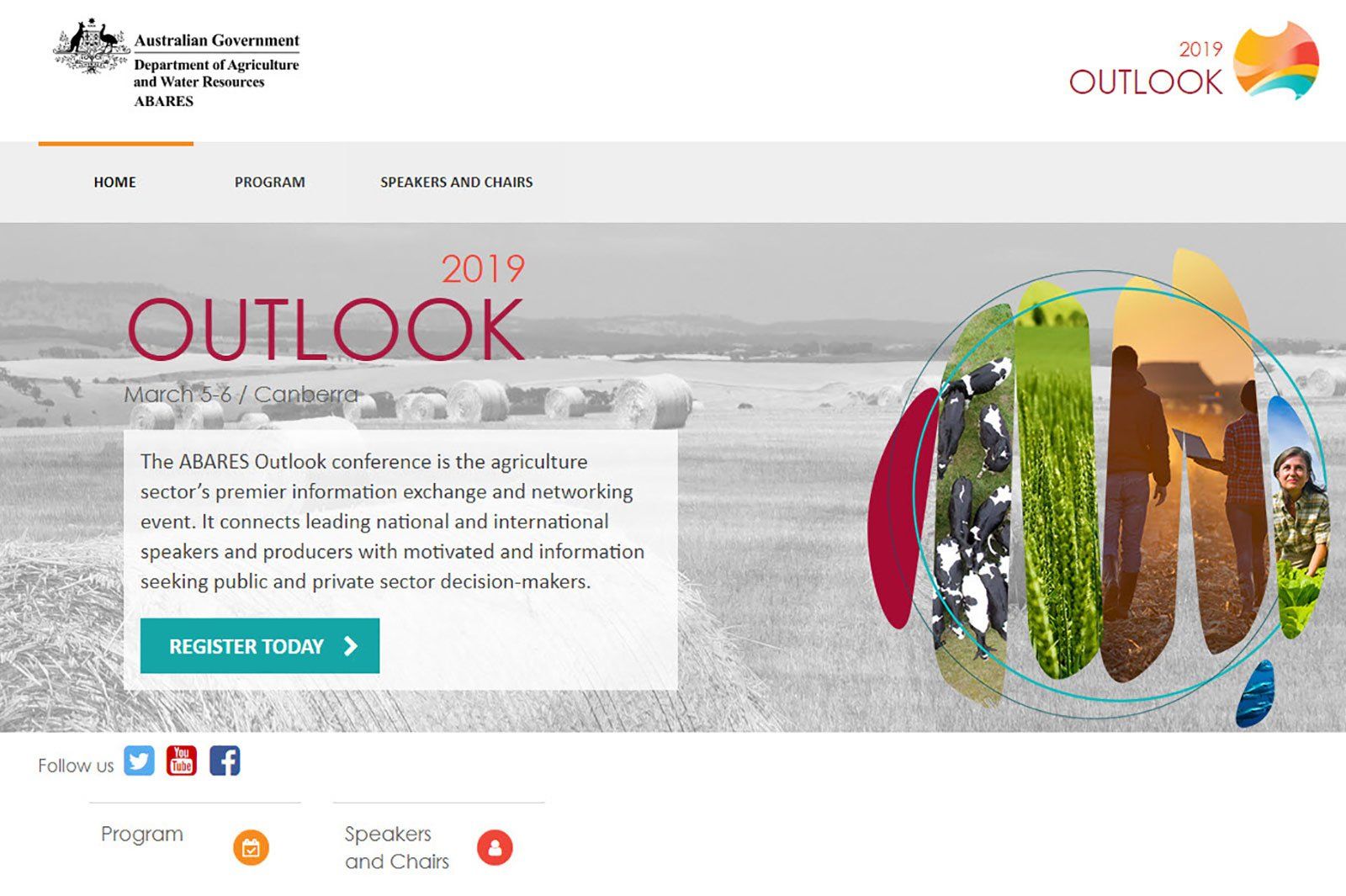1MG FlippingBooks
ABARES Outlook: Farm production down and tough choices ahead
The Australian Bureau of Agricultural and Resource Economics and Sciences ( ABARES ) held its annual Outlook conference in Canberra this week, with this year’s conference focusing on the need to make tough choices to boost agricultural productivity and resilience.
In his opening address at the conference, ABARES Executive Director Dr Steve Hatfield-Dodds identified five key areas that are vital to meeting the sector’s goal of achieving agricultural production of $100 billion by 2030. The five areas are:
- Ensuring agriculture is attractive to workers and investors
- Harnessing innovation to boost performance
- Promoting on-farm resilience and risk management
- Persisting with water reforms
- Respecting and responding to evolving consumer expectations
“Australian agriculture has many advantages, and a track record of good performance, underpinned by tough choices,” said Dr Hatfield-Dodds. “But to thrive and grow—to meet $100 billion—some difficult decisions will need to be made.
“We should be mindful of the substantial, and sometimes painful, reforms that underpinned the growth achieved in recent decades—and that favourable global prices account for 90 per cent of past trend growth. Each of the five areas bring both opportunities and threats, but support the theme of enhancing the wellbeing of producers, consumers, regions, and the nation to increase prosperity.”
This careful outlook on Australian agriculture’s hopes of reaching the mythical $100 billion target by 2030 were dented by news from the conference that the value of farm production for 2018-19 is expected to decline by four per cent to $58 billion.
The main driver of the drop was poor eastern winter crops as a result of drought, thought high prices and a near-record crop in Western Australia provided a significant boost to the national production. ABARES forecasts production to recover in 2019-20 and then grow slowly over the medium term.
It wasn’t all bad news though, with ABARES announcing that – despite the drought in the eastern states – water allocation prices in the southern Murray-Darling Basin next year are unlikely to reach the peak levels experienced during the Millennium drought.
While prices are high at the moment with water allocations trading at around $450 per ML, ABARES modelling predicts that even if dry conditions continue, prices will stay below those experienced in 2007 to 2009.
You can read more from the ABARES Outlook conference by visiting the website.

















